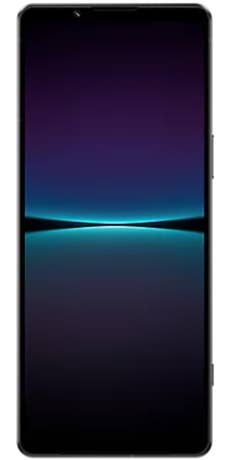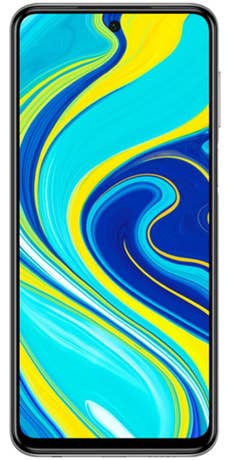Sony Xperia 1 IV vs Xiaomi Redmi Note 9S Vergleich
- Daten
- Preise
Unterschiede hervorheben
Allgemein |
||
| Hersteller | Sony | Xiaomi |
| Modell | Xperia 1 IV | Redmi Note 9S |
| Verfügbar | ✓ | ✓ |
| Marktstart in Deutschland | Juni 2022 | April 2020 |
| Einführungspreis | 1.399 € | 239 € |
| Aktueller UVP | 1.399 € | 239 € |
| Onlinepreis |
|
|
| Betriebssystem | ||
| Betriebssystem (OS) | Android Version: 12 | Android Version: 10 |
Testergebnisse |
||
| Test auf inside digital | Testbericht | Testbericht |
| Gesamt | ||
| Display | ||
| Ausstattung und Leistung | ||
| Kamera | ||
| Software und Multimedia | ||
| Akku | ||
Display |
||
| Display Größe | ||
| Pixeldichte | 643 ppi | 395 ppi |
| Auflösung B x H | 1.644 x 3.840 Pixel | 1.080 x 2.400 Pixel |
| Diagonale Zoll | 6,5 Zoll | 6,67 Zoll |
| Diagonale mm | 165,1 mm | 169,4 mm |
| Typ | OLED | LCD |
| Bildwiederholfrequenz | 120 Hz | 60 Hz |
| Material | Gorilla Glas Victus | Gorilla-Glas 5 |
| Display-Format | 21:9 | 20:9 |
Gehäuse |
||
| Gehäusematerial | Aluminium, Gorilla-Glas | Gorilla-Glas, Kunststoff |
| Gehäuse-Format | ||
| Höhe x Breite x Tiefe | 165 x 71 x 8,2 mm | 165,75 x 76,68 x 8,8 mm |
| Schutzart | IPX5, IPX8, IP6X | |
| Schutz gegen | Untertauchen | kein Schutz |
| Gewicht | 185 g | 209 g |
| Farben | Schwarz, Weiß, Violett | Weiß, Grau, Blau |
Hardware |
||
| Prozessor | ||
| Prozessor / CPU | Qualcomm Snapdragon 8 Gen 1 | Qualcomm Snapdragon 720G |
| Arbeitsspeicher (RAM) | 12 GB | 4 GB |
| Akku | ||
| Akku Kapazität | 5.000 mAh | 5.020 mAh |
| Ladegeschwindigkeit | 30W | 18W |
| Induktives Laden | ✓ | ✗ |
| Speicher | ||
| interner Speicher Größe | 256 GB | 64 GB |
| SD-Kartenslot | ✓ max. 1 TB | ✓ max. 512 GB |
| Arten | microSDXC | … |
| SIM-Kartenslot | Nano-SIM und eSIM | Nano-SIM |
| Mehrfach SIM | ✓ Dual-SIM | ✓ Dual-SIM |
| Einschränkung: Hybrid-Fach | Ja | Nein |
| Sensoren | Fingerabdrucksensor | Fingerabdrucksensor, Face-Unlock |
| Tasten | ||
| Hardware-Tastatur | ✗ | ✗ |
Konnektivität |
||
| LTE (4G) | ✓ | ✓ |
| 5G | ✓ | ✗ |
| WLAN | ✓ | ✓ |
| Standard |
IEEE 802.11a IEEE 802.11b IEEE 802.11g IEEE 802.11n IEEE 802.11ac IEEE 802.11ax |
IEEE 802.11a IEEE 802.11b IEEE 802.11g IEEE 802.11n IEEE 802.11ac |
| Band | 2.4 GHz, 5 GHz, 6 GHz | 2.4 GHz, 5 GHz |
Anschlüsse & Übertragung |
||
| USB | ||
| USB-Port | ✓ | ✓ |
| Typ | 3.2 Typ C | 2.0 Typ C |
| Lightning-Connector | ✗ | ✗ |
| Bluetooth | 5.2 | 5.0 |
| Audio-/ Kopfhörerbuchse | 3.5 mm | 3.5 mm |
| NFC | ✓ | ✗ |
| Radio | ✗ | … |
Kamera |
||
| Rückseitige Kamera | Hauptkamera | Hauptkamera |
| Kameraauflösung | 4272x2848 (12,2 Megapixel) | 8000x6000 (48,0 Megapixel) |
| Sensor | 1/1.7” Exmor RS for mobile Sensor | |
| Blende | f/1.7 | f/1.79 |
| Bildstabilisator | ✓ Variante: optisch-und-elektronisch | ✗ |
| Digitaler Zoom | ✓ 15.6 - fach | ✓ 10.0 - fach |
| Optischer Zoom | ✗ | ✗ |
| Videoauflösung | 3840x2160 (8,3 Megapixel) | 3840x2160 (8,3 Megapixel) |
| Aufnahmegeschwindigkeit | 120 fps | 30 fps |
| Blitz / Fotoleuchte | ✓ | ✓ |
| Rückseitige Kamera 2 | Telephoto-Kamera | Ultraweitwinkelkamera |
| Kameraauflösung 2 | 4272x2848 (12,2 Megapixel) | 3264x2448 (8,0 Megapixel) |
| Kamerasensor 2 | 1/3,5" Exmor RS for mobile Sensor | |
| Kamerablende 2 | f/2.3 | f/2.2 |
| Rückseitige Kamera 3 | Ultraweitwinkelkamera | Makrokamera |
| Kameraauflösung 3 | 4272x2848 (12,2 Megapixel) | 2560x1920 (4,9 Megapixel) |
| Kamerasensor 3 | 1/2,5” Exmor RS for mobile Sensor | |
| Kamerablende 3 | f/2.2 | f/2.4 |
| Rückseitige Kamera 4 | TOF 3D | Tiefenkamera |
| Kameraauflösung 4 | 1600x1200 (1,9 Megapixel) | |
| Kamerablende 4 | f/2.4 | |
| Testbilder |
Es sind leider keine Testbilder vorhanden.
|
Es sind leider keine Testbilder vorhanden.
|
Frontkamera |
||
| Fronthauptkamera | Selfie-Kamera | Selfie-Kamera |
| Frontkamera | ✓ | ✓ |
| Auflösung | 4272x2848 (12,2 Megapixel) | 4872x3248 (15,8 Megapixel) |
| Videoauflösung | 3840x2160 (8,3 Megapixel) | 1920x1080 (2,1 Megapixel) |
Sonstiges |
||
| Besonderheiten |
120 Hertz Optischer und elektronischer Bildstabilisator IPX5, IPX8 und IP6X-Schutz Nano-SIM und eSIM |
Fingerabdrucksensor seitlich im Rahmen verbaut, Quad-Kamera auf der Rückseite (48 + 8 +5 +2 Megapixel) |
| Lieferumfang | USB-Typ-C-Kabel, Kurzanleitung. | 22,5W-Ladegerät, Schutzfolie, USB Typ-C-Kabel, Steckplatzwerkzeug, Benutzerhandbuch, Garantiekarte. |
Was unsere Symbole bedeuten …
- ✓ Ja/Vorhanden
- ✗ Nein/Nicht vorhanden
- … Bislang unbekannt/Wird ergänzt
Wir recherchieren gründlich, um dir die vollständigsten und genauesten technischen Daten zu liefern. Kontaktiere uns, wenn du etwas zu ergänzen hast.



